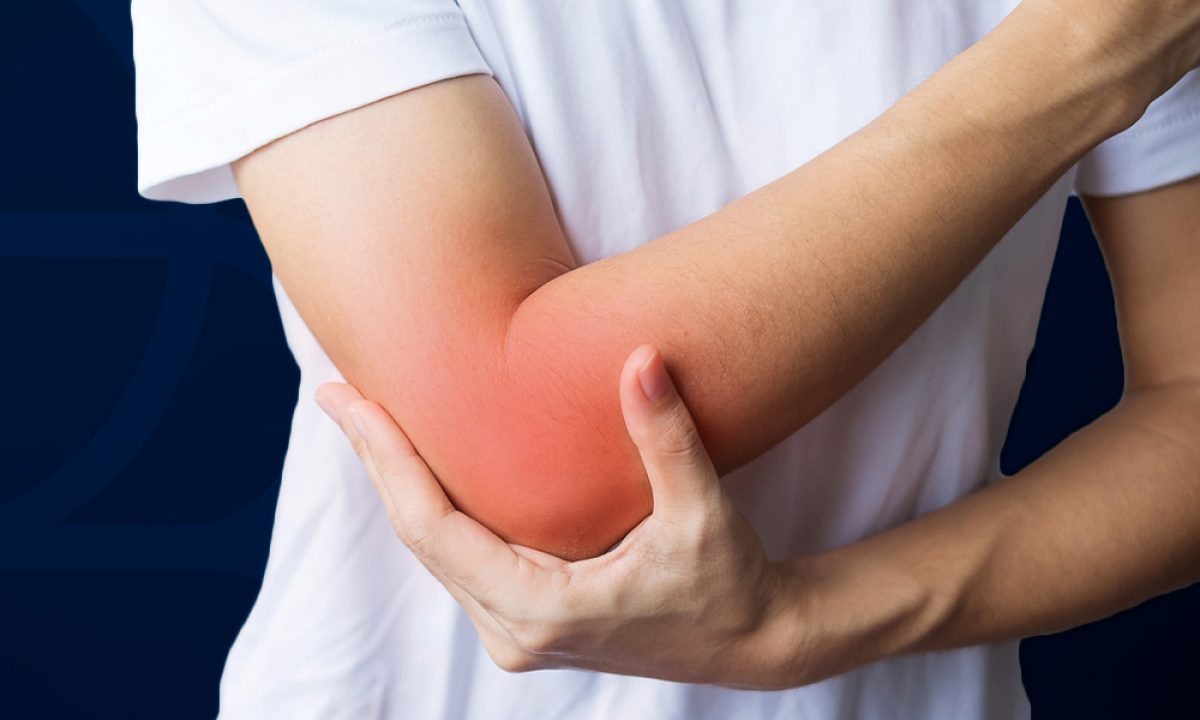Tennis Elbow Doctor Monmouth County NJ
What Is Tennis Elbow?

Tennis elbow is painful weakening of the tendons that join your forearm muscles to your bones. It happens when you work your elbow too much by repeating certain motions. It is also referred to as lateral epicondylitis.
Despite the name, tennis causes only about 5% of cases. You can get it after doing any kind of repetitive movement, like painting or using hand tools. Tennis elbow is a common injury that usually needs only minor treatment, but it takes time and rest to heal.
Where Does Tennis Elbow Cause Pain?
The pain is focused on the outside of your arm, where your forearm meets your elbow.
It’s related to a muscle and tendons in your forearm. Tendons connect your muscles to your bones. When you repeat certain arm movements, the tendons at the elbow end of a certain muscle — the extensor carpi radialis brevis (ECRB) muscle — may get small tears.
The tears may put stress on the rest of your arm, making it painful to lift and grip things. If you don’t get treatment, the pain can last a long time.
What Are the Symptoms of Tennis Elbow?
The most common symptom of tennis elbow is an ache on the outside of your elbow. Over time — from a few weeks to a few months — the ache can turn into a constant pain. The outside of your elbow may be too painful to touch. The pain might go into your forearm and wrist. You may feel pain when doing nothing at all, but usually pain is triggered by particular movements, especially wrist movements that tug on the tendon at the elbow. You can have tennis elbow in one or both arms.
If you have symptoms after a week or so, or if they get worse, it’s time to call your doctor.
Also, call your doctor if you have any of these symptoms:
- It’s hard to move your arm.
- There’s a lump or bulge in it.
- Pain or difficulty moving your arm keeps you from your everyday activities.
- The area around your elbow is reddish or swollen.
What Are the Causes and Risk Factors for Tennis Elbow?
Tennis elbow affects up to 3% of people, mostly between the ages of 30 and 50.
Any repetitive, forceful motion that pulls on the tendon and muscle around your elbow can cause tennis elbow. In tennis, hitting a backhand puts some stress on your forearm muscles, which clench when you hit the ball. If your technique is off or if you grip the racquet too tightly, it puts more stress on the tendons that connect your forearm muscles to your elbow. That can cause the tendons to get small tears.
You can get tennis elbow from playing other racquet sports, such as squash or racquetball. You can also get it from jobs or activities that involve repetitive arm motion, such as:
- Cutting down trees with a chain saw
- Painting
- Carpentry
- Playing some types of musical instruments
- Kitchen work, such as cutting with a knife
- Plumbing
- Working on cars
- Working on an assembly line
A direct blow to your elbow can also make the tendons swell.
How Is Tennis Elbow Diagnosed?
Dr. Marshall Allegra will ask about your symptoms and medical history. He will check for pain in parts of your arm and may ask you to do some simple motions.
Often, that’s enough to tell if you have tennis elbow. If he thinks there may be something else going on, you may get tests such as:
- Electromyography. This will help your doctor see whether you have a problem with the nerves in your elbow and how well and fast they send signals. It can also measure electrical activity in your muscles when they’re at rest and when you contract them.
- MRI. This can find arthritis in your neck or problems in your back, such as a disk issue, that could cause pain in your elbow.
- X-ray. This can check for arthritis in your elbow.
How Is Tennis Elbow Treated?
First stop playing sports or doing certain kinds of work so your arm can rest. Recommendations include physical therapy and medications such as aspirin, ibuprofen, or naproxen.
Additionally, we may provide:
- Corticosteroid medications. Injected into the area to help with swelling and pain.
- A splint or brace. You’ll wear this on your arm to help your muscles and tendons rest.
- Ultrasound. This treatment can break up scar tissue, increase blood flow, and promote healing.
- Up to 95% of people who have tennis elbow get better without surgery.

Marshall P. Allegra, M.D.
One Doctor, Your Doctor for Orthopedic Care
Dr. Marshall P. Allegra is a board-certified orthopedic surgeon in private practice in Monmouth County for over 25 years. Specializing in minimally invasive arthroscopic surgery, full and partial joint reconstruction, hand, foot and ankle surgery, fracture care, and non-surgical treatment options, Dr. Allegra is dedicated to providing one-on-one personalized care to every patient.
Dr. Allegra is the only physician you will see when you visit the practice, and he will supervise each phase of your diagnosis, treatment and recovery.
An experienced diagnostician, Dr. Allegra can expertly determine the causes of chronic and acute pain in his patients due to hip, knee, hand, shoulder and sports-induced injuries, and then determine the best treatment options to return patients back to work, to the playing field, restoring functionality and range of motion as quickly as possible.
Dr. Allegra has performed more than 500 hip and knee replacements on patients from Monmouth County and surrounding areas. Thousands of Dr. Allegra’s patients have returned to active lifestyles thanks to his quality, personalized care and innovative treatment options.
